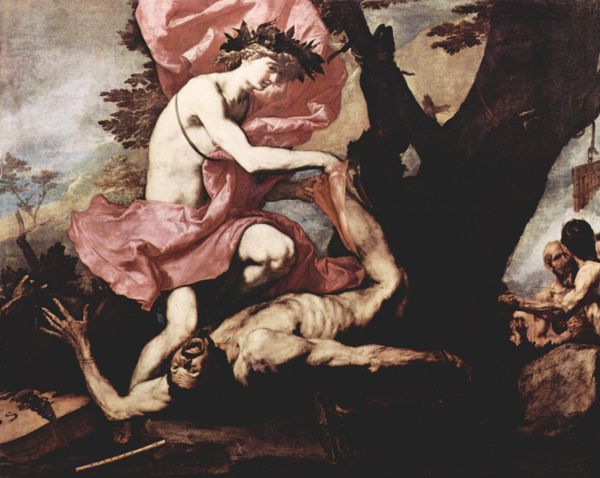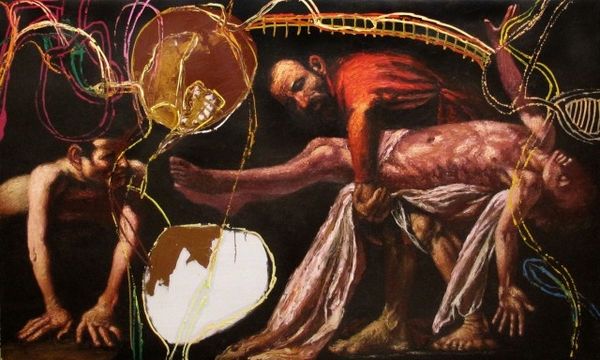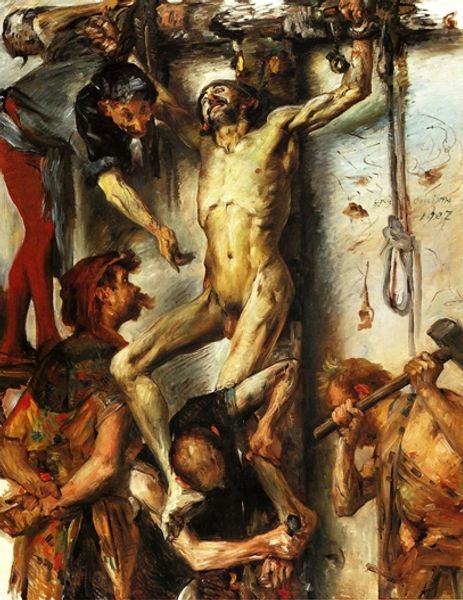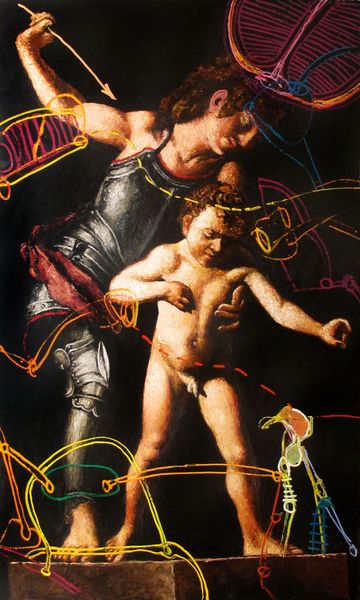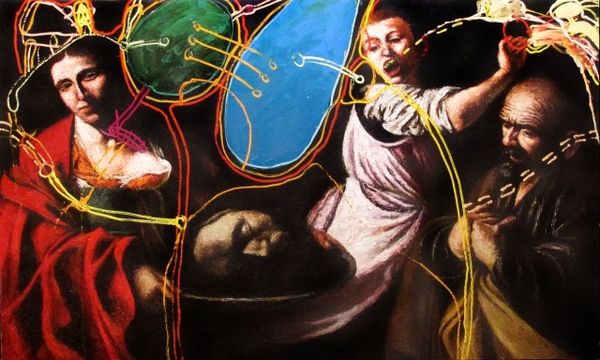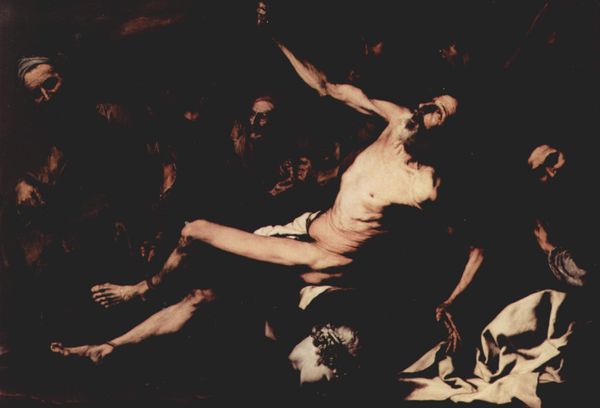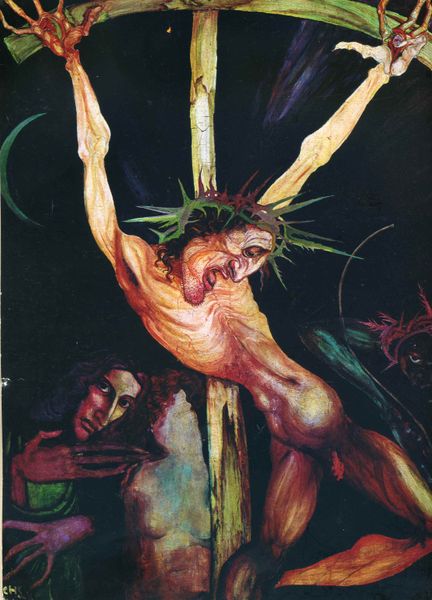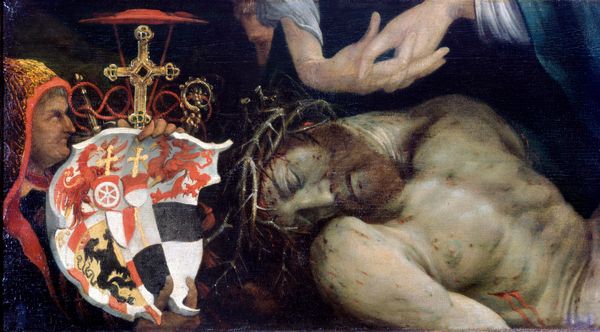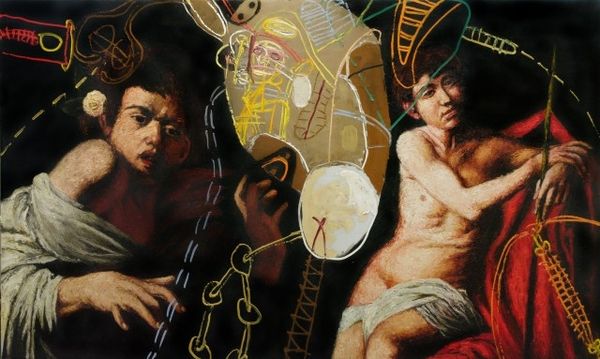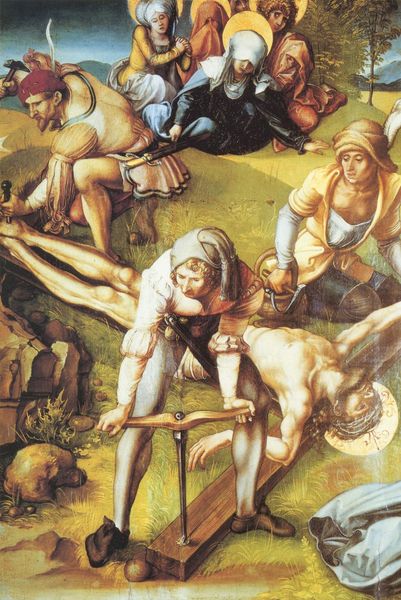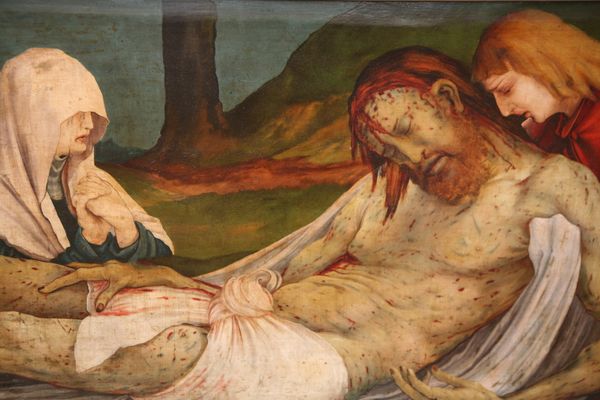
Copyright: Alexander Roitburd,Fair Use
Curator: The piece before us is "Roitburd VS Caravaggio. Opus # 005" by Alexander Roitburd, completed in 2009, rendered with oil paint. My immediate impression is of visceral intensity, the composition is almost brutally direct. The stark contrast against the dark background amplifies the emotional rawness. Editor: It seems like Roitburd uses the trope of historical painting in his contemporary revision. Think about Caravaggio and his followers—what do these artists want to tell us with images of decapitation, sacrifice, murder? Are these political, moral, or just a display of virtuosity? Curator: The vibrant lines overlaid onto the figures – red, green, yellow – create a fascinating tension. They seem almost diagrammatic, abstracting the visceral scene into something more conceptual. What does this add to the viewing experience? Editor: I interpret the lines as a type of flaying. They are visually connected and refer to inner states that cause violent action: rage, passion, envy, jealousy, etc. In a nutshell, there is the artist and the model, the perpetrator and the victim—the public gets what it wants! Curator: You mention perpetrator and victim—that’s critical. It mirrors so many power dynamics across cultures, political oppression, gendered violence…The composition underscores this conflict. One figure stands, dominant, the other lies prone. It seems to critique a timeless drama that constantly recurs within history. Editor: Indeed, notice how Roitburd contrasts the tenebrism of Baroque painting with expressionist strokes. This not only reflects his visual analysis, but also suggests that violence is deeply ingrained, nearly inevitable across societies and eras. What do we have if not "darkness"? Curator: The choice to explicitly invoke Caravaggio’s dramatic lighting heightens this reading. It creates a through-line connecting the violence of the past to our present, suggesting it is ever lurking, merely veiled beneath modern advancements. I appreciate how Roitburd leverages art history. Editor: Roitburd masterfully integrates history and raw emotion, which transcends time, compelling us to confront uncomfortable truths about power and brutality. A stark painting. Curator: It challenges viewers like us to reckon with the legacy of conflict but pushes towards more difficult and meaningful self reflection. Editor: Precisely. It invites contemplation, and ultimately, hopefully, action toward dismantling similar cycles of violence today.
Comments
No comments
Be the first to comment and join the conversation on the ultimate creative platform.

